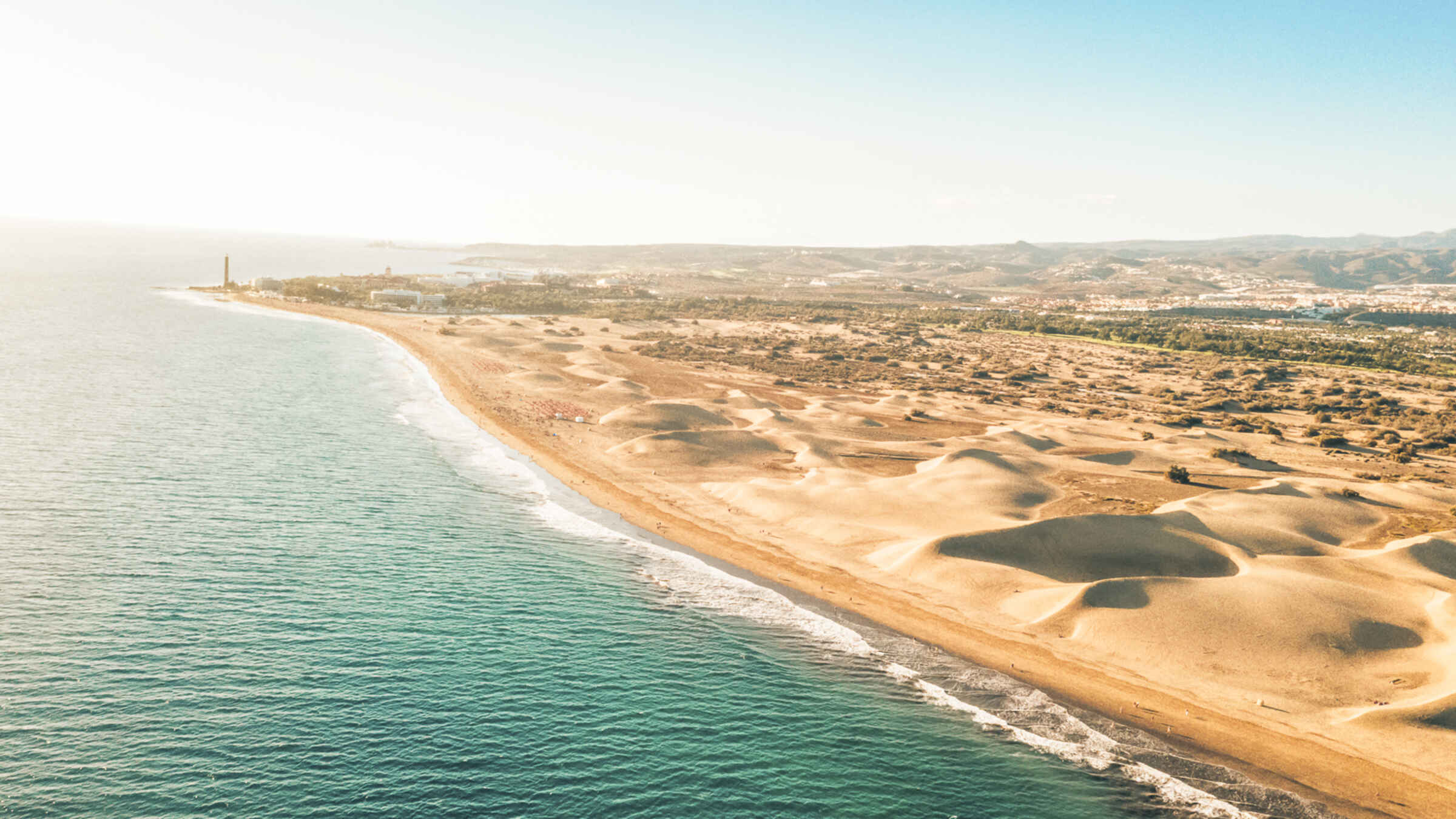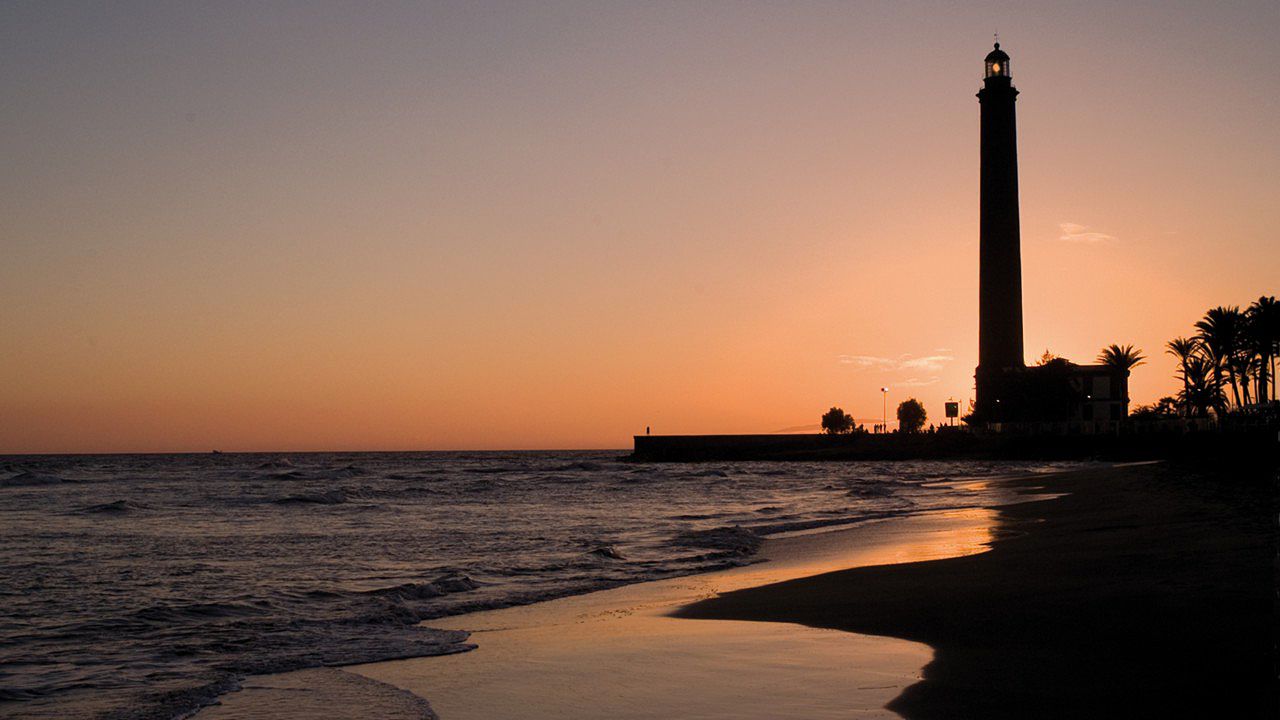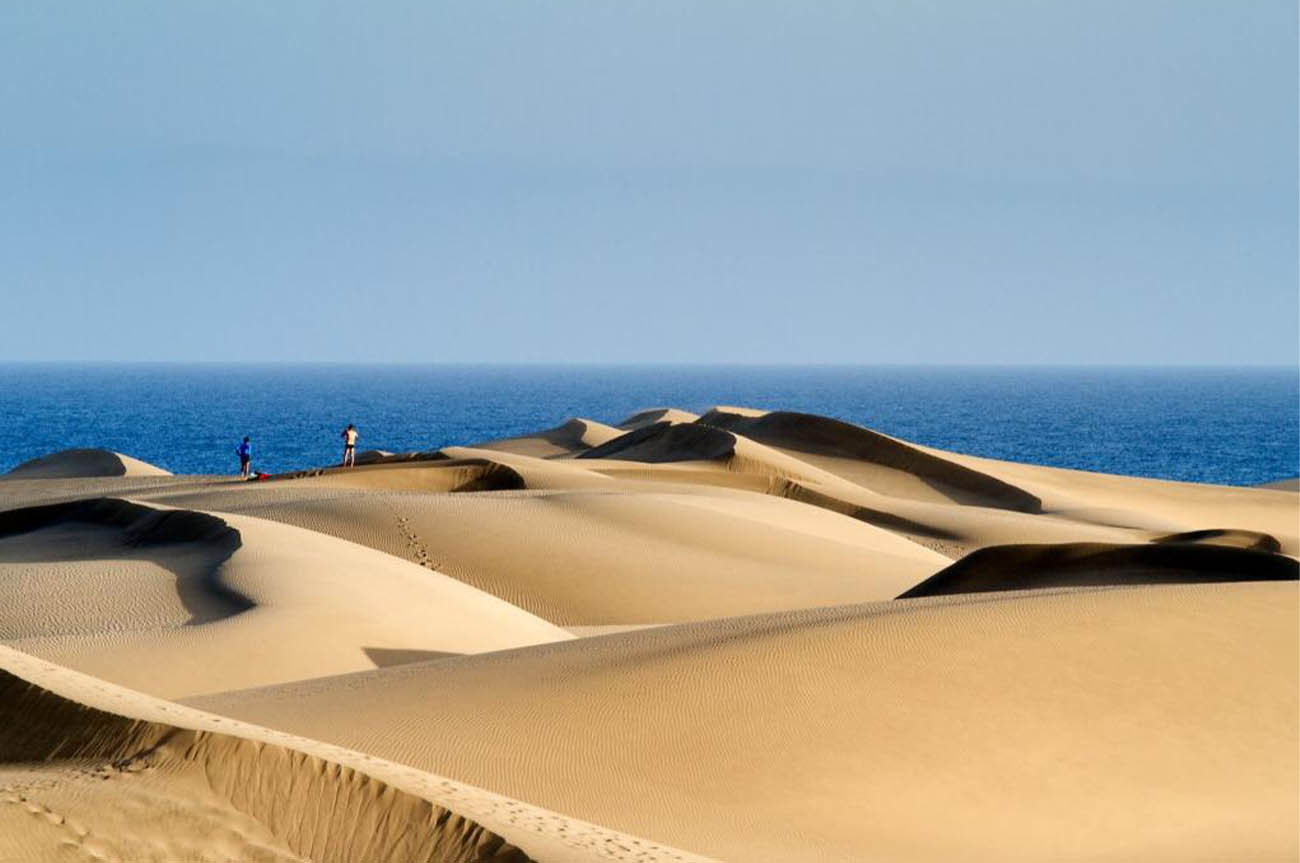Gran Canaria is an island with numerous places of great tourist interest. We can find natural enclaves that make it unique, such as Roque Nublo, the Tamadaba Natural Park or the Maspalomas Dunes. However, there are also unique architectural enclaves that have become a symbol for the island, such as the Maspalomas Lighthouse.
It has become the main tourist attraction in the south of the island. Numerous visitors come to this point to admire this jewel of Canarian architecture in an incomparable setting, flanked by an incredible natural environment, such as the Maspalomas Dunes and the natural reserve Charca de Maspalomas, a protected pond.
Today, we want you to get to know this marvellous place better. We’ll tell you it’s story, why it was built in this spot, who was the architect of this monument, as well as where it’s located and how to get to it.
History of the Maspalomas Lighthouse
The Maspalomas Lighthouse is located in a setting that marks the southern tip of the island of Gran Canaria. The lighthouse project was developed around 1861 and was intended to guide the steamships that came from Oceania and Africa on their way to America.
It wasn’t until 1864 that the construction began under the direction of the Teldense engineer Juan de León y Castillo, very famous on the island for being the precursor of the Puerto de la Luz.
However, at the end of the 19th century, the area of Maspalomas was sparsely populated, and communication routes were scarce.
This meant that a small pier had to be built to serve as the main axis for transporting the materials arriving from the capital.
The works lasted almost 5 years, until 1869, and the lighthouse emitted its first flash of light on the night it was put into operation, 1st February 1890
The Maspalomas lighthouse is 60 metres high and has a diameter of 6.2 metres. It faces directly out to sea, with a lantern in the shape of a glass dome, with 3.7 metres in diameter.
Apart from the tower, the lighthouse has an attached house for the lighthouse keeper in the immediate vicinity, designed with a fairly traditional approach and featuring an interior Canarian courtyard. León y Castillo advised that the building should have two storeys in order to be in harmony with the height of the lighthouse.
In 2005, the Government of the Canary Islands declared it an Asset of Cultural Interest in the category of Historical Monument. Since 2007, the rooms of the lighthouse have been used as a venue for cultural events.
Already in 2015, the lighthouse was given another use, taking advantage of its 125th anniversary. In this sense, it’s intended to be rehabilitated in order to be able to house, in the not too distant future, an Ethnographic Centre.
This is a very ambitious museum project in which the FEDAC and the Department of Culture of the Cabildo of Gran Canaria are going to focus their efforts, both financially and logistically, to create a great museum in the south of the island.

Where is the Maspalomas Lighthouse?
The Maspalomas Lighthouse is located in the southern municipality of San Bartolomé de Tirajana, in the tourist enclave of Maspalomas.
It’s located in a totally strategic place. It’s between a place where you can enjoy the best restaurants in the south, such as Meloneras, and the area of Playa del Inglés, the main centre of tourism in the south of Gran Canaria.
To these two locations, we must add two others of great natural interest such as Charca de Maspalomas and the Dunes of Maspalomas, making the lighthouse a unique environment with a great heritage, natural and tourist interest.
How to get to the Maspalomas Lighthouse?
Getting to the Maspalomas Lighthouse is very easy. If you’re coming from Las Palmas de Gran Canaria, you can take the GC-1 towards Maspalomas and reach several points where you can get to the lighthouse.
You can leave your vehicle in the area of Playa del Inglés, walk along the promenade or the shore of the beach, where you can see the lighthouse in the distance while you enjoy a pleasant stroll until you reach it
If, on the other hand, you want to get directly to it, the best thing to do is to get to Meloneras, taking the same GC-1, leave the car in the vicinity, and with a walk of about 10-15 minutes you’ll reach it and enjoy its privileged surroundings.
So much for today's article dedicated to one of the island's architectural and tourist gems. We hope that with this information we’ve offered you, you’ve been able to learn a little more about its history and how it has become an emblem of the island.
In short, if you’re on the island, you cannot leave without visiting the Maspalomas Lighthouse and discover one of the best preserved architectural jewels of the Canary Islands, with an extraordinary past and future.


